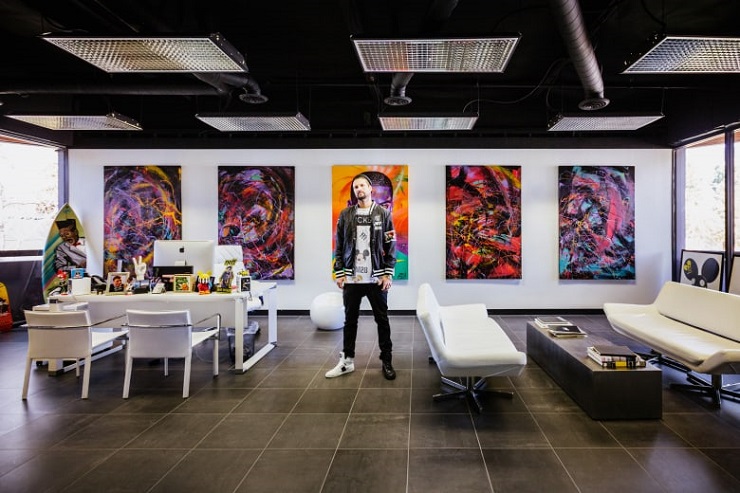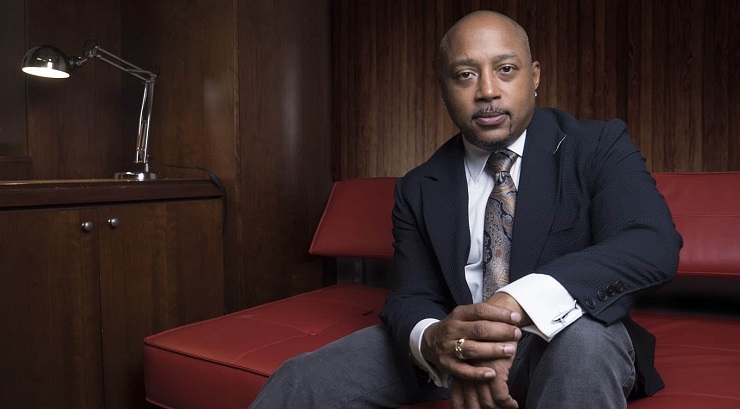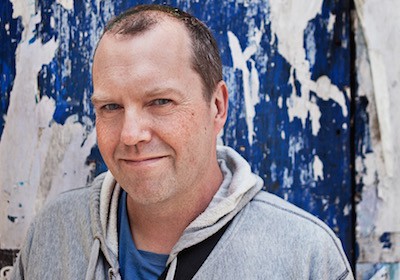The playbook for branding these days reads quite differently than the one from five years ago. As a career marketer with a dozen-odd seasons under my belt, I have already seen the game flipped on its head a few times—rules of play scratched out and scribbled over to the point of almost being unrecognizable.
Brands that are still clutching their traditional media plans and maintaining the impenetrable wall between themselves and their customers are losing ground, fast. Meanwhile younger, digital native brands are growing legions of loyal fans by adopting a more accessible, human approach.
The reality is, in this customer-led economy, most of us have come to expect seamless, meaningful experiences from our chosen brands. While it’s not a total “baby out with the bathwater” scenario—enduring principles of branding like finding your audience and nailing a consistent tone of voice still apply—the startups rocketing ahead are the ones who can successfully turn this people-powered momentum into sales fuel.
As a founder, perhaps with limited exposure to marketing, it can all seem like one big riddle. But here’s a good place to start:
Branding is a lot more than a few snappy visuals and a tag line. It encapsulates every imprint of your product or service, and every interaction a potential customer has with you.
Guests featured on the Foundr podcast over the past two years have built up some of the most influential brands on the planet. We’ve scoured more than 100 past interviews with the world’s leading entrepreneurs to come up with solid gold from brand heavyweights including Shark Tank celebrity investor Daymond John, streetwear guru Shaun Neff, serial startup queen Gretta Rose van Riel, and the founding team behind runaway beauty brand success, Frank Body.
Infiltrate a Culture
If you’re lucky, your product or service has a natural niche audience. Or you might have to dig a little deeper to find it. Either way, immersing yourself in one or even multiple subcultures is a powerful, proven brand-building activity.
The great news is that social media has made subcultures more accessible than ever before. But beware of deep diving into cultures that aren’t your native ground. Nothing alienates people quicker than a blatant culture fail, as DC Comics discovered earlier this year when one of its issues referred to the language “Pakistanian.” Naturally the good people of Pakistan, who speak Urdu, were far from impressed, and the brand was mocked endlessly on social media.
Faux pas aside, once you have identified your cultural niche, creating hype within it is one of the best ways to get your brand on everyone’s lips. Daymond John and Shaun Neff both enjoyed early success by creating hype within their markets.
Serial founder John launched FUBU just as hip hop culture was exploding. FUBU, which stands for For Us By Us, was created as a brand that purveyors of hip hop culture could wear proudly, at a time when major retailers like Timberland were trying to distance themselves from the scene. As John told Foundr:
“Hip hop was a culture, a way to talk and dress, a lifestyle. We decided we would be proud of the people who purchased our clothes. Young people, people of color, hip hop lovers—here was a brand they could identify with and make an emotional connection with.”
Shaun Neff had similar success creating hype within the adventure sports market. Ahead of a televised snowboarding event, Neff purchased a stack of 99 cent headbands and beanies, wrote his surname on them with a Sharpie, and distributed them to key contenders.
“Headwear wasn’t written into contracts back then. So I thought, alright, I’m going to get these influencers putting Neff hats on their heads. I had the most ghetto product ever, but I showed up and handed out these dollar beanies to the biggest world pros. Later, the guys who won first and third were on NBC wearing beanies with a Neff logo. That was the start of everything. We started getting written up in magazines within snowboarding and snowboarding culture.”
Make it Meaningful
Now that you’ve identified your niche market, you need to matter to them. Go on, off you go. And while you’re at it, it would be awesome if you could also work out the meaning of life. Thanks.
Not quite that simple, is it? If this strikes fear into your heart, don’t worry, you’ve got company.
I recently heard a senior ad agency creative tell a startup event crowd: A brand with no point of view has no point. It sparked a few head nods, but it was mostly vexed expressions and a few outright looks of terror staring back at him. You could almost hear the hamster wheels spinning inside people’s heads: Do we stand for something? Anything? Holy crap! The two women in front of me shrugged at each other before breaking into a fit of giggles. If they didn’t know, how could their customers?
Working out what your brand stands for can indeed be a big, hairy question – particularly if you are the master of a fledgling brand, and still finding your feet.
But it’s important to know that the speaker wasn’t suggesting the audience go out and publicly pick a side in the GOP race, or take up social arms for a good cause (although it is wise to start thinking about, if not yet doing, corporate social responsibility as your business grows). He was referring to how brands who own their values and demonstrate a high EQ (emotional intelligence) are better positioned to form meaningful connections with customers.
A good place to start is to paint a clear picture of who your audience is: How do they feel? What do they want? What keeps them awake at night? If you have some early adopters, reach out to them and find out what makes them tick.
Then, use that knowledge to craft messaging that will evoke a strong emotion—it’s this emotional connection that has the power to hitch people to your brand in a meaningful way. Show them your brand is more than a clever logo and a few finely-honed lines of marketing guff—it’s human, like they are.
Show you understand what matters to them because it matters to you, and that you care in a way that is backed up at every touch point. While this is not true for every industry, the benefits of using your product or service are often secondary to how people’s connection to your brand makes them feel.
Investing time in these kinds of activities is one of the big power plays in today’s social media-driven battleground of branding. A theory that was proven by the creators of Frank Body, who made a staggering $20 million in sales in one year, simply by forming genuine relationships with their audience on Instagram.
Talking to Foundr, the Frank Body team of Bree Johnson, Erika Geraerts, and Jess Hatzis said:
“We noticed a real niche with beauty and health brands on Instagram. It was the most influential market, but beauty companies were still speaking at a high level and not connecting with their customers. We saw young female users, who were quite impressionable, building an idea of themselves and who they were via the products they were purchasing, and the brands they were engaging with. They also used social media really casually and conversationally every day, so we knew we had to talk in that way to them.
For us, social media was always just about having conversations, chatting to people and building personal relationships. We encourage founders to work out what their voice is for their product or service, and just really own it, and make sure their customers relate to it.”
Make it an ‘I Have to Have’
Unfortunately, it’s not enough for your market to think your product is kinda useful or your brand is sorta OK. If you evoke a lukewarm response, or your USP (unique selling property) is hidden under a confused or heavily layered message, people will swipe left, Tinder-style, on your brand. (The key point of difference being, you won’t have the chance to make them fall in love with you over a few awkward, boozy dates down the road).
As a celebrity investor on Shark Tank, Daymond John sees a constant stream of new ideas and believes that nailing your point of difference is crucial when vying for people’s attention:
“Come up with something distinctive. Instead of it being a “me too” product – make it an ‘I have to have’ product. Then, make sure it’s quality and that people have a strong connection to it.”
For serial startup founder Gretta Rose van Riel, owner of SkinnyMe Tea, The Fifth Watches, Nichify and DROP Bottle, launching a successful product is a matter of identifying either an emerging market or a market gap, and then coming up with something so good people would sell their grandmothers to get their hands on it.
That’s been the case with van Riel’s watch brand, The Fifth. By offering a limited range of timepieces on the fifth day of each month for five days only, van Riel created a powerful, rolling demand that has delivered exceptional results—The Fifth pulled in a lazy $1.2 million last December, just six months’ post-launch.
“With my product businesses, I’ve found it most helpful to look at a successful trending product, and then change one element or one dimension of that product. It’s about making a product better, and then utilizing your audience. With The Fifth, we also use a mixture of inclusivity and exclusivity in our marketing. Rather than just selling a timepiece, we limited the time they were available, so they became a bit more exclusive.”
Give Them a Standout CX (Customer Experience)
Customers are wearing the pants right now, to an extent that few people really saw coming. A year or two ago, marketers were simply focused on getting big, shiny digital content out there, to be seen and engaged with.
Engagement alone no longer cuts the mustard, nor is it a good enough measure on its own of your marketing impact. Making your customers happy, at every twist and turn, is paramount, which is why expressions like “customer obsessed” are popping up in brand books left, right and center.
In addition to feeling good about your brand at every touch point, people also expect to be able to interact with you, and fast. Twenty-four hours used to be an acceptable response time, but these days, particularly if customers are calling you out on social media, they expect to hear back within an hour or two.
They also want to look behind the veil of your business, so they know you can be trusted. This is evidenced by the fact that most of the world’s biggest social media influencers are celebrities who invite their followers behind the VIP curtain, as well as offering glimpses of themselves doing everyday things.
The most effective celebs interact with their followers in a way that makes the connection feel genuine—just like any other friend who mucks around with Snapchat filters and shares it with you.
If you can create that sense of realness in your branding, it will go a long way toward people believing you’re as authentic as you say you are.
One of the tactics you can use to help build a bulletproof CX is to physically construct the worldview of your customers at different touch points. Shar VanBoskirk from Forrester called this out in her recent blog post, where she discussed how brands should be mapping out emotional milestones for customers, and tailoring a message or emotion to evoke at each marker. According to VanBoskirk, AirBnb uses this tactic effectively, having developed storyboards that capture how hosts and guests feel at different stages of the journey.
From a more practical standpoint, Daymond John reminds us that CX is about delivering on the everyday expectations of customers, like simply being able to access your product or service:
“Find vehicles to distribute and make sure people can get it after they see it. Don’t go and launch an entire line of 50 things you can’t put in people’s hands—you will frustrate them if they try to get a hold of something and can’t find it. You’ve got to fulfil the consumer’s request.”
Grow Your Sphere of Influence
In addition to masterfully inserting his brand into different subcultures, Shaun Neff has also forged close links with key influencers in each arena. This has been an important strategy for his brand in what can be an unforgiving industry. (In retail, what’s cool one minute can be discount bin fodder the next).
Collaborations with everyone from Snoop Dogg and Wiz Khalifa, to Disney, and many leading sports personalities have kept Neff relevant to multiple audiences at one time. In Neff’s mind, he rates the people you associate your brand with as one of marketing’s most critical success factors:
“Nail these three important attributes on every campaign – a great product, a great marketing story, and a great ambassador.”
For Van Riel, who has an Instagram reach in excess of 15 million, connecting to brand influencers was such an important piece of the puzzle, she created an entire product to support it. Nichify is a new social network that links brands up with social influencers.
“With my product companies, I learned it takes a lot of time and energy to do influencer marketing. So Nichify was an organic progression around the want to systemize our own marketing. We launched six months ago and have grown really quickly, with almost a billion in social reach. It’s a really great communications tool for brands to use to collaborate with social media influencers and talk to them in one place.”
According to Ed Dale, creator of The Challenge and co-founder of MagCast, founders can also use their own influence as a brand asset, and leverage it to build up a “bank of goodwill” that can be drawn down at a later date for your own launches and promotions (though quite a bit later, he suggests).
Dale, who has helped more than 300,000 entrepreneurs start online businesses, also believes there is long-term value in befriending other key players in your market:
“You should absolutely know the top 20 influencers in your market, and be following them, because there are always opportunities to serve or to help. But do it without expectation. If you’re doing it for reciprocity—that is the wrong intent. You should do it because you want to be cool in your marketplace. It’s much better to be the cool guy than the asshole! Hopefully you’re in your market because you’re passionate about it, and that includes helping people out. That’s the only thing that moves the needle. Do cool things for your audience, do cool things for other people.
Just hang out, be interested, be curious—if you do that everything falls into place. Clinical networking is short-term thinking, and, in this day and age, it’s insane. The more deposits you can make in your goodwill bank account by appearing in other people’s podcasts, doing favors, serving them, promoting their stuff—will stand you in good stead.”
With the digital sphere still evolving at such a rapid rate, it will be interesting to see what branding hotspots pop up over the next 12 months! But a few things seem certain, brands that dare to be human and focus on building meaningful connections with their audiences will be setting themselves up for massive success.
Have you had success building your brand on social media? Challenges? We would love to hear your experiences below.





















